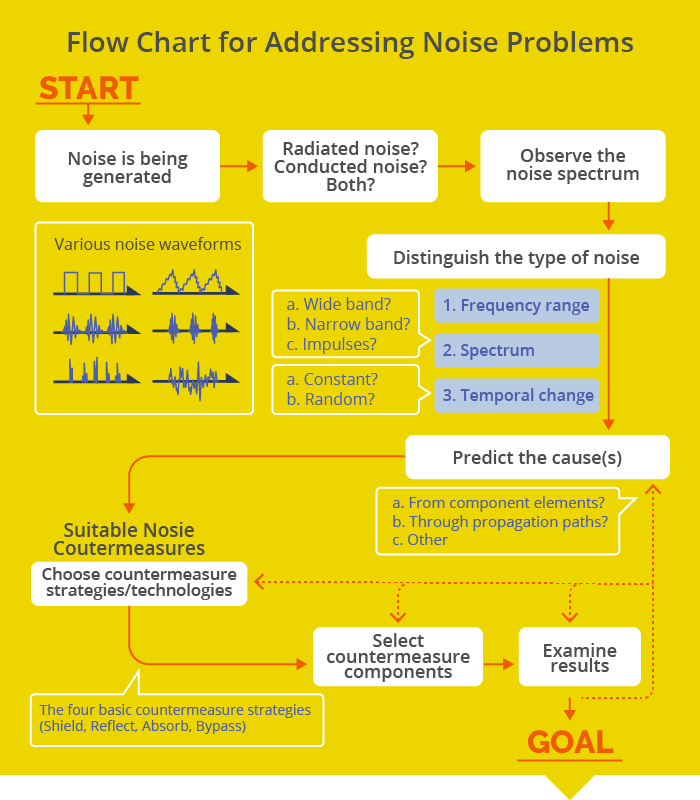Intro to EMC Topics
Practical Applications—Part 7: EMC Measures for DVD and Blu-ray Recorders

Audio-visual equipment like DVD and Blu-ray players come standard with HDMI connectors. HDMI is a high-speed digital interface capable of transmitting high-definition video and audio signals uncompressed. It is convenient to be able to connect DVD and Blu-ray recorders to digital TVs with a single cable. However, sending large amounts of digital information at high speeds raises SI (Signal Integrity) requirements.
Differential transmission methods are driving speed and capacity increases between digital devices
Among DVD/Blu-ray recorders, models featuring built-in HDDs (hard disk drives) have become dominant. It is common for people to record their favorite programs on the high-capacity HDDs, and transfer the ones they want to store more permanently to DVDs.
Digital TVs and recorders with HDMI (High Definition Multimedia Interface) connectors can be interconnected with a single HDMI cable to transmit large, uncompressed, digital high-definition video. HDMI is a high-speed digital interface that uses the differential transmission method, which uses a pair of wires to transmit signals that are flipped 180 degrees in phase. The method is widely used in interfaces between digital devices, including USB and IEEE 1394.
According to its working principle, differential transmission should be resilient to external noise and should not emit any noise. In reality, however, even a slight imbalance within the pair of signals can generate common mode noise, and interface cables can also radiate common mode noise. Like PCs, the HDDs built into DVD/Blu-ray recorders have transitioned to Serial ATA (SATA)—which uses differential transmission—to accommodate larger capacities and higher speeds, resulting in the generation of common mode noise. This is where common mode filters become indispensable. Chip beads and LC filters are insufficient for noise suppression in differential transmission interfaces because their speeds are growing perpetually. It wouldn’t be an overstatement to say that common mode filters represent the only fundamental solution.
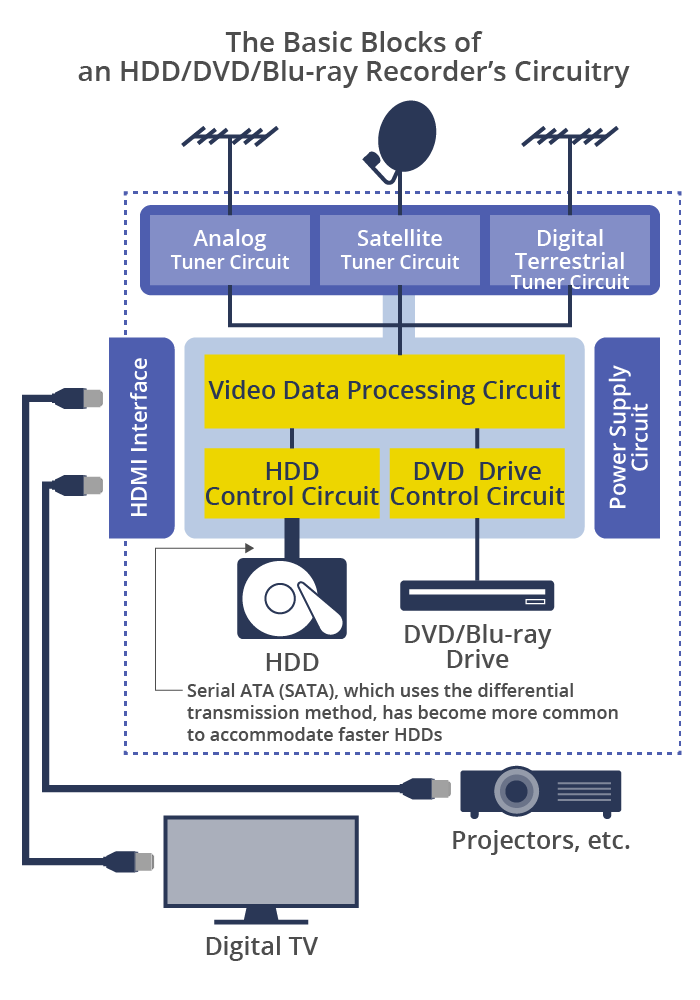
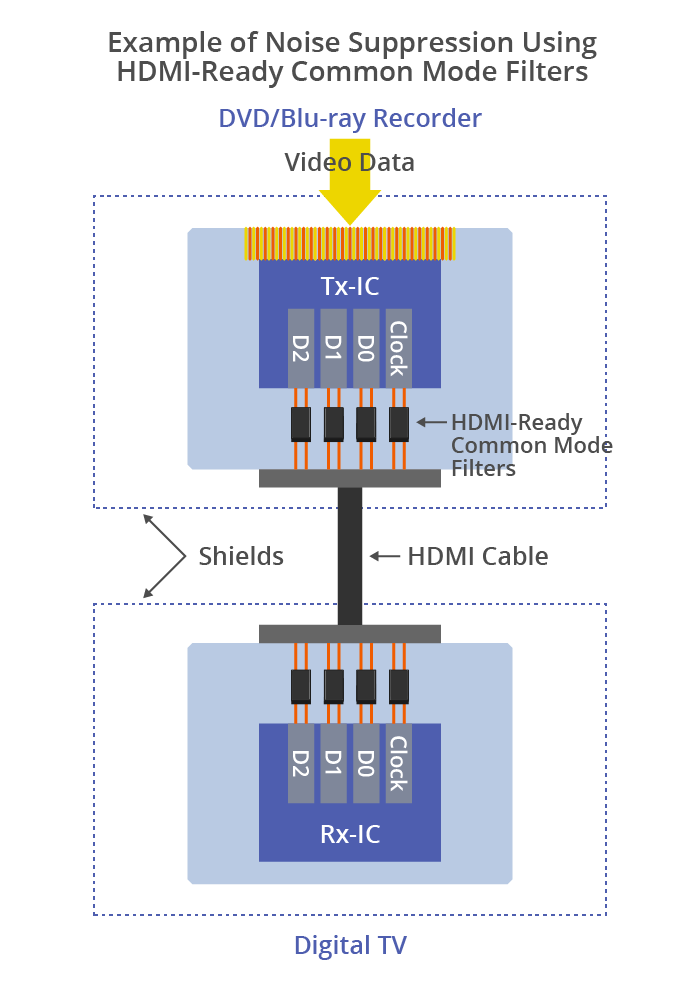
HDMI-ready common mode filters suppress noise without distorting the signal waveform
TDK’s common mode filters designed for HDMI not only reduce noise, but also clean the signal waveform to ensure correct transmission. The pulse waveform of a digital signal is a collection of the fundamental wave and its integer multiple harmonics. Since harmonic components can cause radiated noise, components beyond the 5th to 7th-order harmonics must be removed by a filter. This is because the fundamental wave and its 5th to 7th-order harmonics alone are largely sufficient to preserve the signal waveform. For example, if the transmission frequency is 800MHz, the 7th-order harmonic will be 5.6GHz. This implies that a noise filter that suppresses only common mode noise across a very wide band spanning 5.6GHz will be required. If the filter’s cutoff frequency is lower than 5.6 GHz, signals—which are in differential mode—will be attenuated.
TDK’s HDMI-ready common mode filters (the ACM2012H series) are advanced noise suppression components incorporating cutting-edge technologies, such as micron-scale precision control of wire winding spacing, bringing the cutoff frequency dramatically up to 6GHz. This enables ultra-high-speed data transmission as well as superior suppression of radiated noise and protection of signal waveforms from distortion.
To guarantee the interoperability of devices, HDMI mandates strict compliance testing of the interface, including cables, connector shapes and wiring (known as the physical layer), and it will not be certified as an HDMI device unless it clears these tests. Filters that distort the signal waveform are disqualified, no matter how effective they are at removing noise. The “eye pattern” test is a key evaluation procedure. This test examines whether the highs and lows of differential signals are kept intact even when they are sent in a variety of bit patterns. Its namesake is the hexagonal mask pattern that appears on an oscilloscope resembling an eye. If the waveform overlaps the mask pattern even slightly, it is considered non-conforming. TDK’s HDMI-ready common mode filters cover a frequency range of up to 6GHz. When used, the transmitted waveform remains nearly identical to the original form, and easily passes the “eye pattern” test.
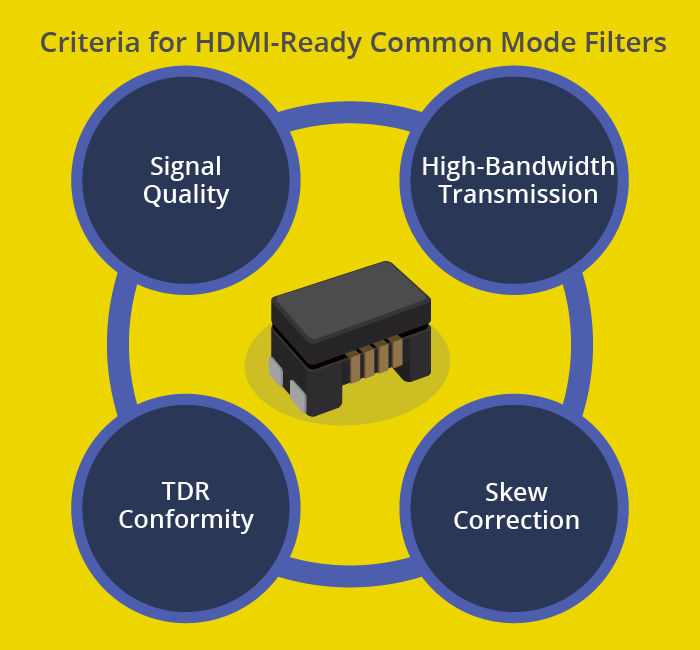
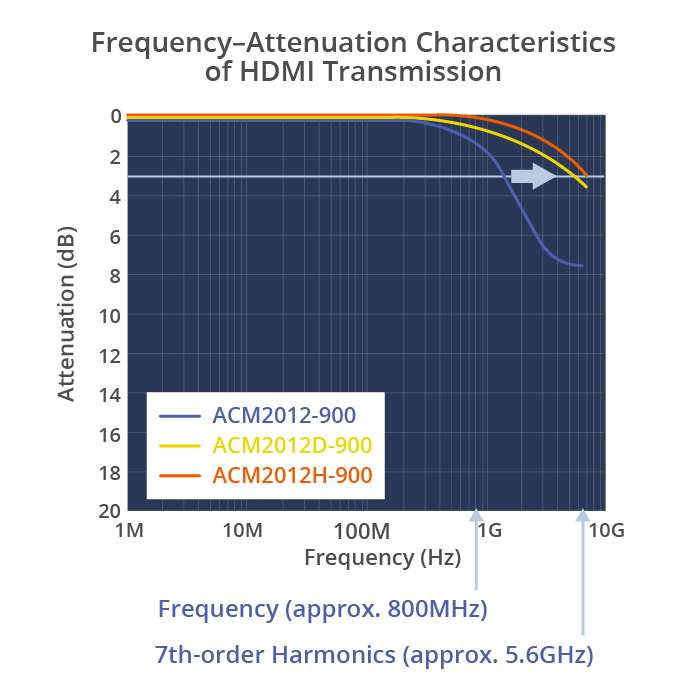
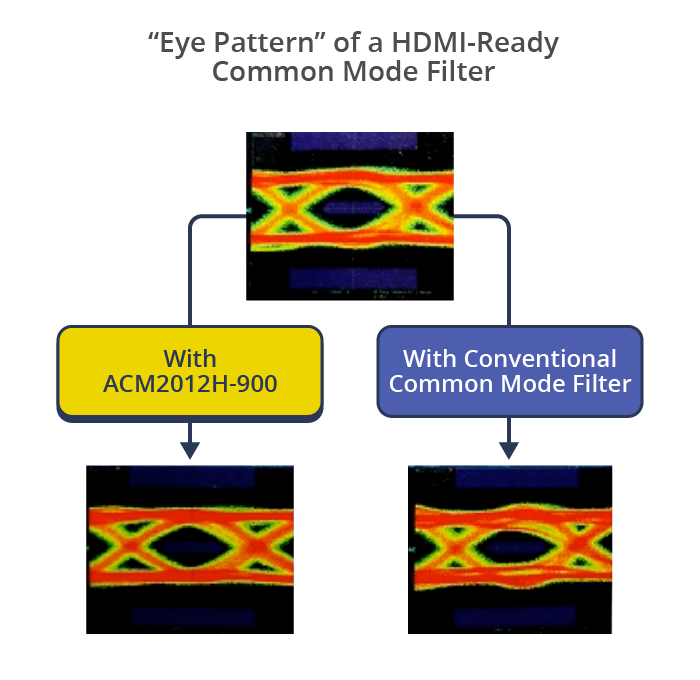
Effective for both skew and impedance characteristic corrections
A key strength of TDK’s HDMI-ready common mode filters is that they not only reduce radiated noise and ensure correct signal waveform transmission but also provide excellent skew correction. Ideally, the highs and lows of a differential transmission signal should be symmetrically aligned. In reality—due to differences in IC output characteristics, transmission line lengths and other factors—the rise and fall timings of the waveform, amplitude, pulse width and other attributes can vary. This can result in unbalanced components known as skew, causing common mode noise. TDK’s HDMI-ready common mode filters provide excellent skew correction that restores subtle imbalances in the signal waveform.
One part of the mandated compliance testing is TDR (Time Domain Reflectometry). For high-frequency signals higher than several hundred kHz, the impedance characteristics of transmission paths like wiring and cables are restricted. However, subtle amounts of stray capacitance (capacitor components) or self-inductance (coil components) not discernible from the circuit diagram can cause impedance characteristics to deviate from the specified range and become mismatched. As a result, signal reflection and waveform distortion may occur, rendering high-speed transmission unachievable.
TDK’s HDMI-ready common mode filters have excellent impedance characteristics matched to 100Ω, flattening small impedance mismatches and blocking reflections. As SI (signal integrity) becomes more important, common mode filters become the sole option for noise suppression components for differential transmission lines. It’s easy to understand how HDMI-ready common mode filters are essential noise suppression components for high-definition, high-resolution audio-visual entertainment like 4K/8K ultra HD.
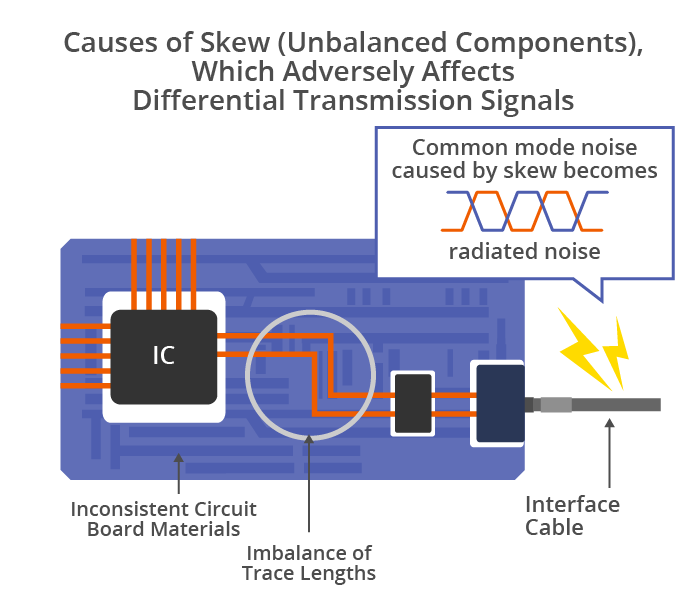
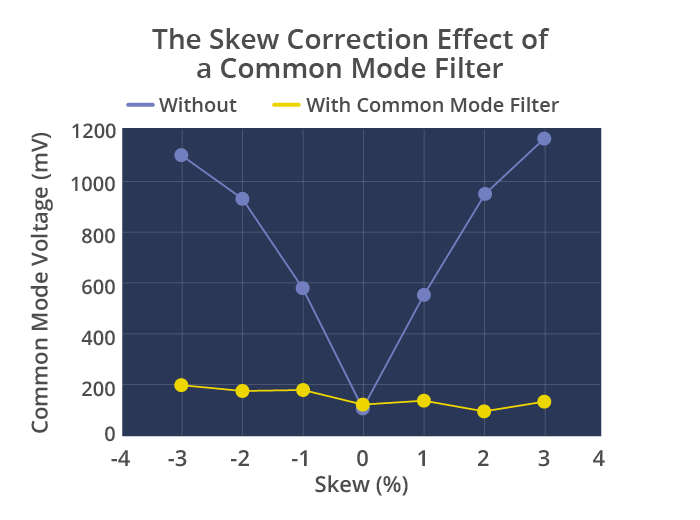
TDK offers an extensive line of common mode filters for HDMI and other high-speed differential interfaces. For more information, please refer to Selection Guide for Signal Line Common Mode Filters/Chokes at the TDK Product Center.
https://product.tdk.com/ja/products/selectionguide/cmf.html
TDK is a comprehensive electronic components manufacturer leading the world in magnetic technology




